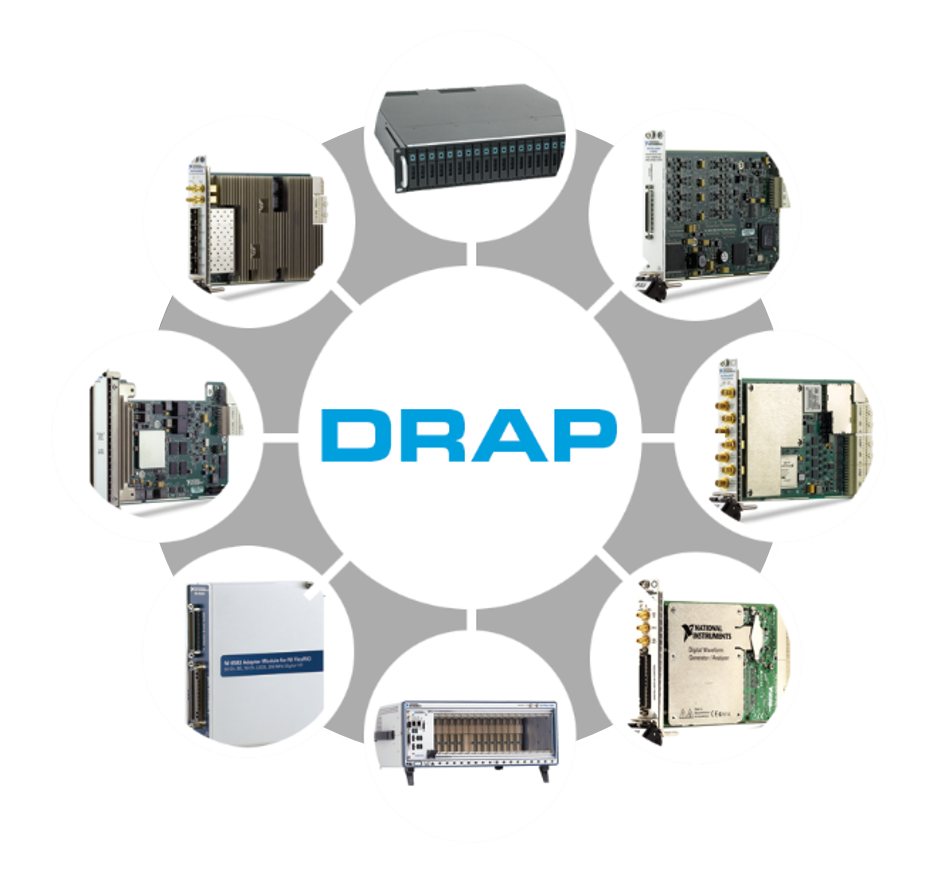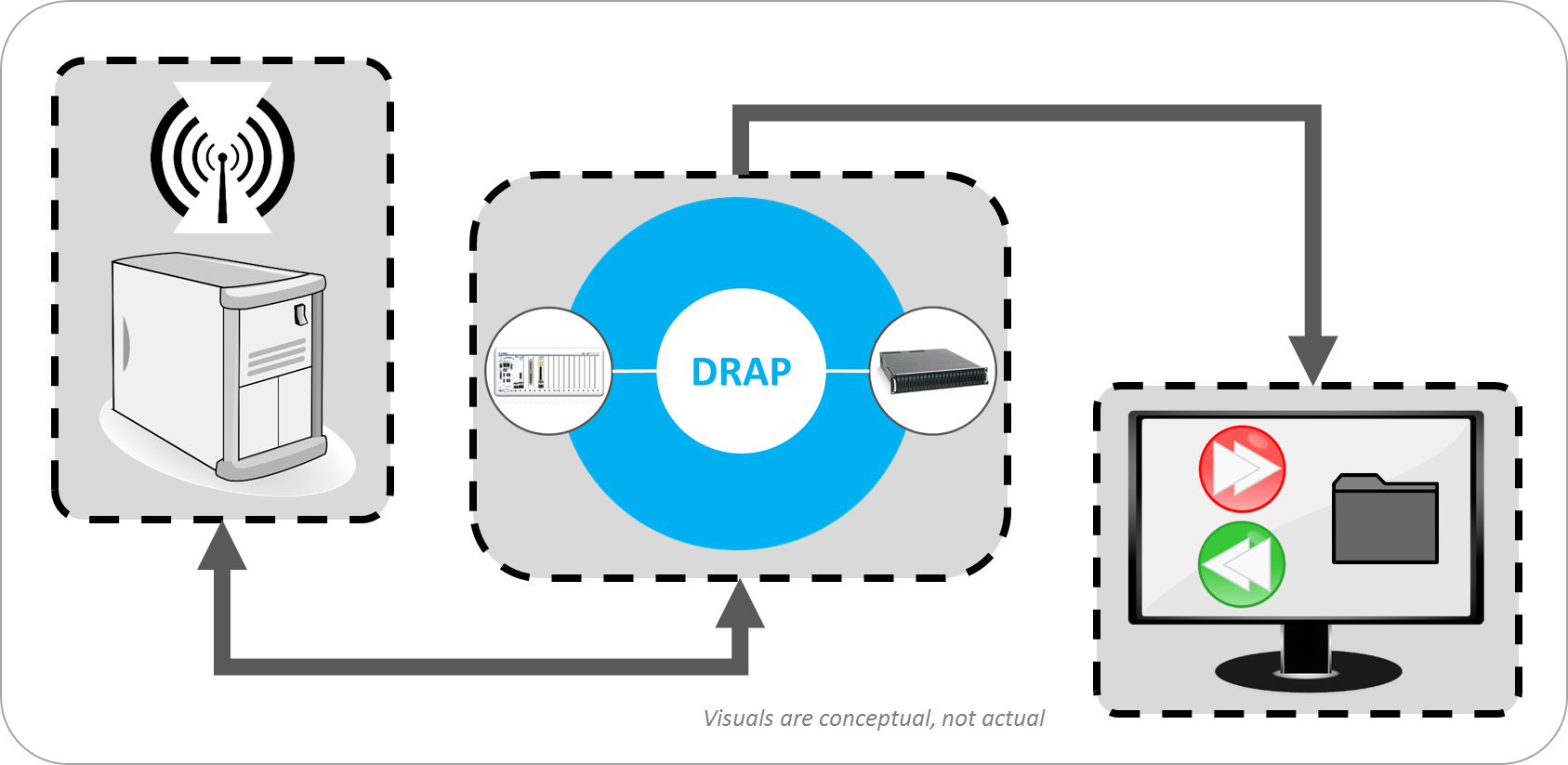High speed data acquisition systems
DRAP – RAID-based high-speed Digital Data Record And Playback
Need to collect LOTS of digital data/signals really fast?
If a logic analyzer or external hard drive aren’t cutting it, check out DRAP.
For debug and validation of high-data-rate systems
| Parameter | Capability |
|---|---|
| Storage Capacity | 5+ TB |
| Aggregate Record Rate | 1+ GB/s |
Do you develop complex systems such as
radar, communication systems, RF sensors, imaging, or video?
Reduce Your Development Cycle
Enable concurrent off-line analysis, algorithm development, and test.
Debug faster and more methodically
Reconcile real-time algorithms with models and provide repeatable stimulus during algorithm debug and optimization.
Reduce Test Setup Time & Costs
Set up your test environment once, collect a bunch of data, and re-use the data over and over.
Software Framework
The DRAP Software Framework provides baseline functionality so that you can get up and running quickly. For basic record and playback capabilities with off-the-shelf hardware interfaces, this can be accomplished in less time than it takes to order hardware.
For more customized functionality, you can take advantage of an architecture that incorporates the foundational elements that any DRAP system needs, including: API, data stream conversion, logging, and hardware interface abstraction.



